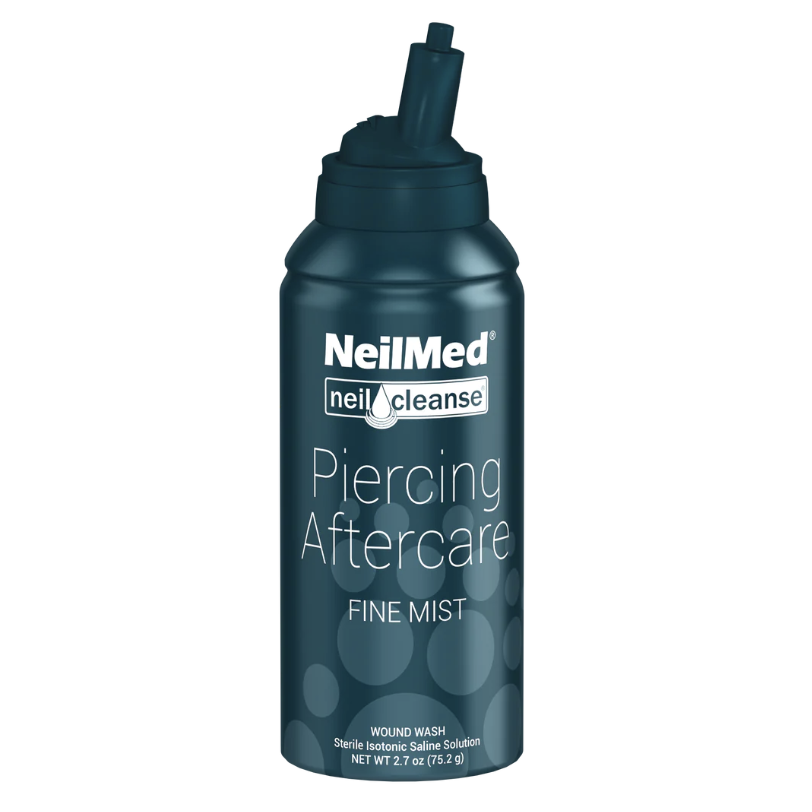How to Clean Your New Piercing
- Posted on
- By Allen Dabbs
- Posted in aftercare, aurapiercing, infectedpiercing, northhollywoodpiercing, piercingaftercare, piercingcleaning, piercinghealing, piercinginfection, piercingjewelry, sorepiercing, studiocitypiercing, thevalleypiercing
- 0

A Comprehensive Guide to Cleaning New Body Piercings: Dos and Don'ts
It's crucial to prioritize proper aftercare to ensure a smooth healing process. Cleaning your new piercing correctly is key to preventing infections, reducing discomfort, and maintaining the overall health of the piercing. In this blog post, we'll provide you with a comprehensive guide to cleaning new body piercings, including essential dos and don'ts.
1. Why Cleaning is Important
Newly pierced areas are susceptible to infection due to the disruption of the skin's natural barrier. Cleaning helps remove debris, bacteria, and germs that can lead to infections and complications.
2. The Basics of Cleaning
Dos:
-
Wash Your Hands: Always start by thoroughly washing your hands with soap and water before touching your new piercing.
-
Saline Solution: Use a sterile saline solution (saltwater). Saline helps keep the area clean without causing irritation. We have two in store and available to purchase online.
-
Gentle Cleaning: Gently clean the area around the piercing with a cotton ball or swab soaked in the saline solution. Avoid using harsh soaps, alcohol, hydrogen peroxide, or other strong cleaning agents, as they can disrupt the healing process.
-
Rinse Thoroughly: After cleaning, rinse the area with clean, warm water to remove any residue. Pat dry with a clean, disposable paper towel.
Don'ts:
-
Overcleaning: Cleaning your piercing too often can disrupt the natural healing process and lead to irritation. Stick to the cleaning schedule recommended by your piercer.
-
Twisting or Rotating Jewelry: Avoid twisting or rotating your jewelry during cleaning, as this can introduce more bacteria and cause irritation.
-
Touching with Dirty Hands: Never touch your piercing with unwashed hands, as this can introduce bacteria and increase the risk of infection.
-
Overusing Products: Using too many products or mixing your own cleaning solutions can lead to adverse reactions. Stick to the saline solution recommended by your piercer.
3. Cleaning Schedule
Follow your piercer's instructions regarding the cleaning schedule. Generally, a new piercing requires cleaning twice a day, preferably in the morning and before bed. As the piercing heals, you can gradually reduce the cleaning frequency.
4. Signs of Infection
Dos:
-
Pay Attention: Monitor the healing process and look out for any signs of infection, such as excessive redness, swelling, warmth, persistent pain, yellow or green discharge, or a foul odor.
-
Consult a Professional: If you suspect an infection, consult your piercer or a medical professional promptly. Early intervention is crucial to prevent complications.
Don'ts:
- Ignoring Symptoms: Ignoring signs of infection or assuming they will go away on their own can lead to serious complications. Address any concerns promptly.
5. Healing Time
The healing time for a new piercing varies based on the type and placement. It's important to continue cleaning the piercing until it's fully healed, even if it appears to be healing well earlier.
Conclusion
Proper cleaning is essential to ensure your new body piercing heals without complications. By following the dos and don'ts outlined in this guide, you'll create an optimal environment for healing, allowing you to enjoy your new adornment to the fullest. Remember that patience and diligence during the healing process will pay off in the form of a beautiful, well-healed piercing that you can proudly showcase for years to come.

Comments
Be the first to comment...